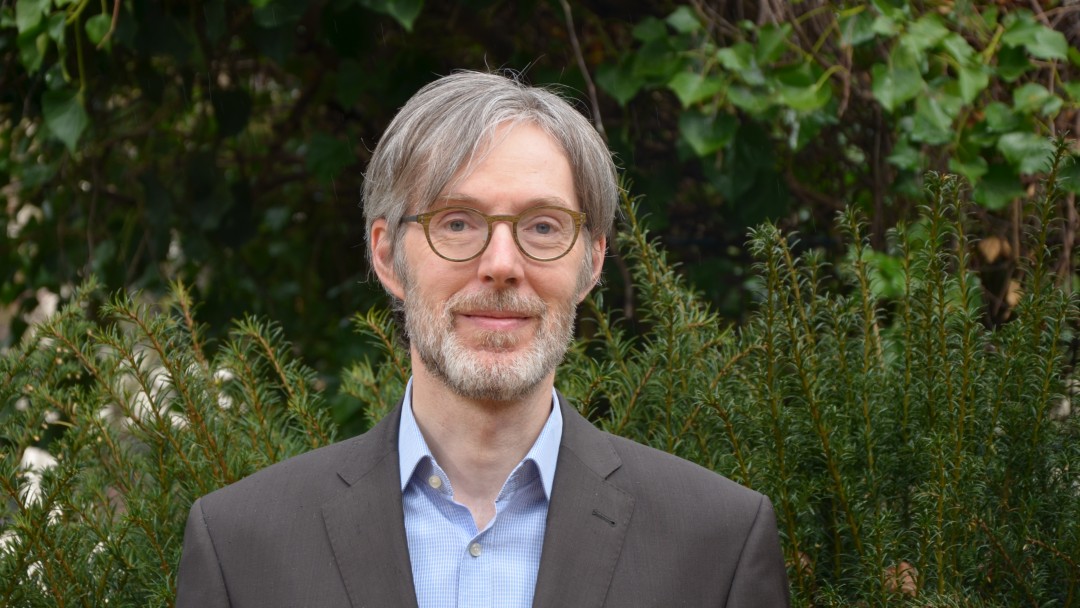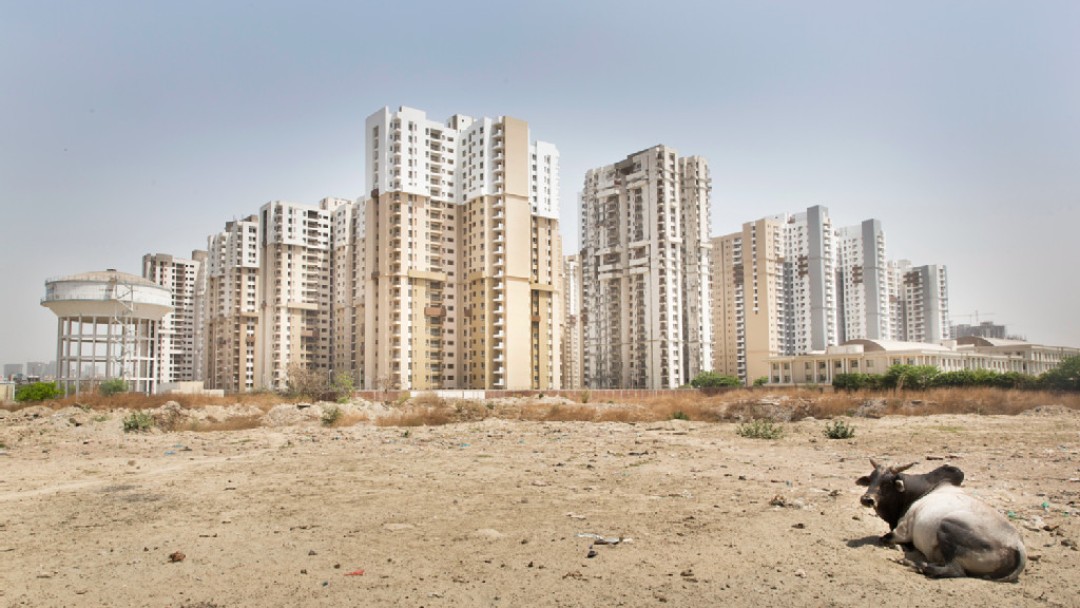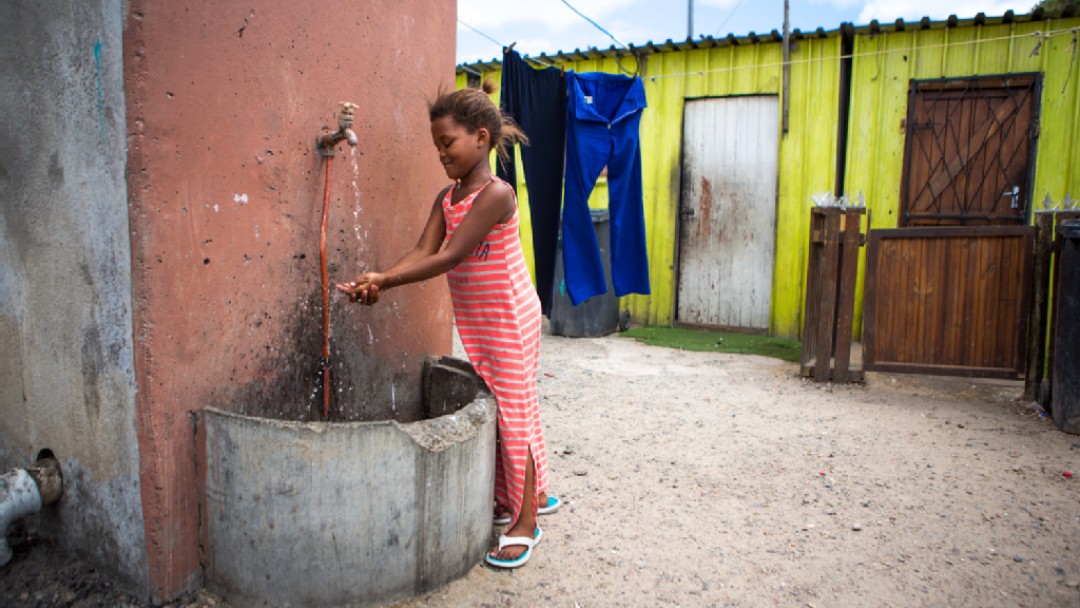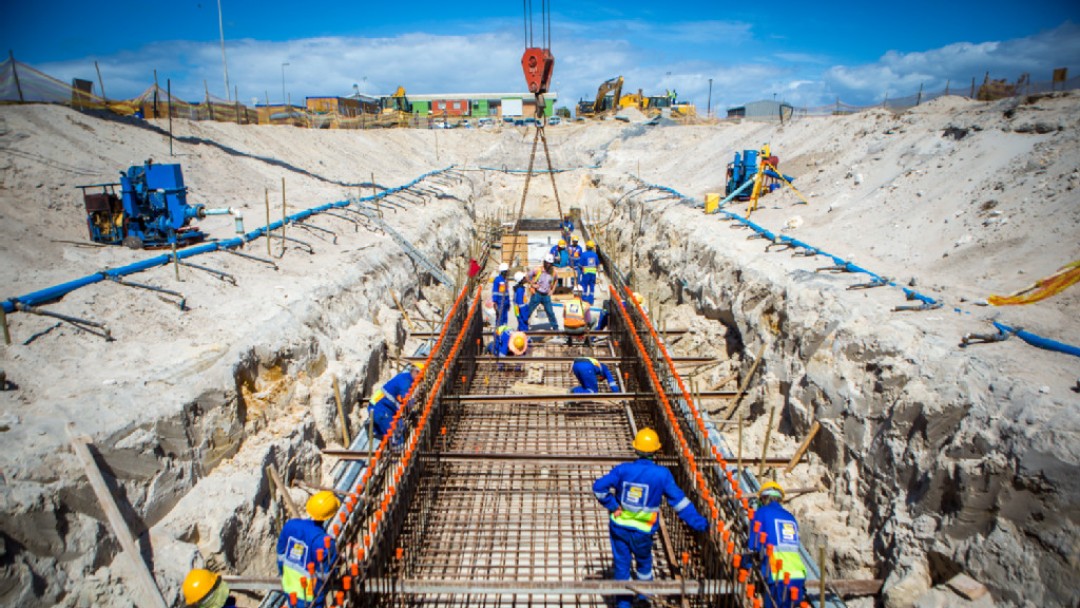Interview with Dr Christian Lütke Wöstmann
“A crisis in slow motion”Dr Christian Lütke Wöstmann, Director of KfW’s Centre of Competence for Infrastructure, Water and Natural Resources, in an interview with Friederike Bauer on global water shortages and why we underestimate the risks associated with them.
Published 22 March 2021, updated 22 March 2024.

It’s an important day in our calendar, as the United Nations has declared safe and affordable access to water to be a human right. World Water Day gives us an annual reminder about this human right, which unfortunately remains out of reach for many.
More than half a billion people have no access to clean drinking water. And more than 400 million people have to defecate outside – with all of the social and health consequences that this entails. Although a lot has been achieved in this area in recent years, not least thanks to the Millennium Development Goals and subsequently the Sustainable Development Goals, a huge number of people are still affected.
It’s actually a crisis happening in slow motion, albeit with very serious consequences. It’s astonishing that this issue doesn’t have a higher profile, especially as water plays a significant role in climate change. Many of the negative effects of global warming can be observed in water-related phenomena: flooding and torrential rain, for example, as well as water scarcity and droughts. Water reflects the dangers of climate change.
That is also undoubtedly linked to the fact that water is usually organised at municipal level. There are very few powerful lobbies or committed campaigners discussing it on a large scale. Furthermore, many countries have a good supply of water and people are used to being able to turn on the tap whenever they like. That is the case in most industrialised countries, although in recent years, we have even seen the water supply get a bit tight on occasion here too. But the fact that more prosperous countries usually have plenty of water goes a long way towards explaining why there isn’t greater awareness of this problem.
Over two billion people live in countries where the supply of water is under increasing pressure. That is more than one quarter of humanity, and climate change is likely to push this figure even higher.

Lack of sanitation is primarily a problem in southern Asia and Sub-Saharan Africa. The Middle East, for example, suffers greatly from water stress. However, the problems are widespread among developing countries and emerging economies.
On the contrary, there is plenty that can be done. Certainly on the demand side, by taking more care to ensure that water is used sparingly. But companies on the supply side can also make a difference by managing networks sensibly and carrying out regular, high quality maintenance. There is a lot of room for improvement. Large amounts of water are still lost through damaged pipes.
A good deal of progress has been made over the last twenty years. In countries such as Peru and Bolivia, for example, campaigns like “Agua para todos” – “Water for all” – have achieved a lot. But all these efforts have not yet been enough to guarantee the human right. One important reason is a lack of investment. Water connections and networks cost money that many countries just don’t have. Or they keep water tariffs at far too low a level for political reasons. That usually leads to water consumption being higher than it needs to be. And the water companies cannot operate cost effectively. They cannot guarantee quality or maintain the pipes. At some point, the supply then suffers as well.
That does happen in many countries, through direct investment or financial contributions to the water suppliers’ budgets. But that only works so long as the government or municipality behind this financing can afford it. Furthermore, it only makes partial sense at best from a development policy perspective, as members of the middle classes also get to enjoy this subsidised water even though they could afford to pay the real price for it. There is no need to subsidise people who will use the limited water in their lawn sprinklers or to clean the street.
No. There are many aspects to providing water, all of which need to be considered. And it’s only possible to provide clean water at reasonable prices when the various factors, such as water catchment areas, pipes, connections, suppliers and supply and demand, are interacting effectively.

It’s highly relevant; on average, 70% of water worldwide goes towards agriculture and only 30% is used to supply people and industry. In agriculture, water is often used inefficiently. Addressing that is tricky, however, because agriculture is frequently backed by large, well organised interest groups. They want a plentiful supply of cheap water to be available for their production. The potential to save water in agriculture is huge and we are nowhere near making the most of it.
For many years now, it has been one of the largest sectors and it accounts for around 10% of total commitments – around EUR 1 billion per year. Water is traditionally viewed as very important here – so important that people used to joke that the acronym KfW stood for “Kreditanstalt für Wasser” (Water Loan Corporation) instead of “Kreditanstalt für Wiederaufbau” (Reconstruction Loan Corporation)! That has changed a bit as new topics have joined the portfolio, but water still makes up a large proportion of KfW’s work.
We primarily engage with water and waste water projects in cities – where around 80% of our projects are located. Among other things, that is because these projects allow us to achieve a great deal in a small area. However, it’s also about the process of urbanisation more generally, as it poses a major challenge for many poorer countries, including in relation to their water supply. In terms of regions, we are relatively well distributed across the world.
The proportion of water that is discharged untreated is indeed very high. UN Water, for example, estimates that 42% of domestic wastewater is untreated. However, the figures are relatively unreliable and vary greatly from region to region. That is why we at KfW usually look at the two issues simultaneously: water supply and waste water disposal. Otherwise, you can solve the problem on one side and create a new one on the other.

Reuse of treated waste water in agriculture or parks, for instance, is an important technology that is not yet being used enough, often because the general conditions do not exist. Some countries have a lot of barriers that make it impossible. In these countries, the legal and organisational framework needs to be built first. I think, however, that as water shortages increase, the pressure to invest more in reuse will increase too.
It’s certainly an option, including for KfW, but only if nothing else works. First, we look for opportunities to save water. Then we consider how a system could be improved and whether there are ways to reuse water. If none of those are possible, we think about desalination of seawater. The technology is expensive, although prices have decreased recently. We also occasionally promote it, in places like Tunisia, India or Jordan, for example. However, it is still the last resort for us, at least for now.
I believe it’s going to be a huge challenge and very tight, especially as access to water still doesn’t mean that water is available 24 hours a day.
It has indeed been possible to largely avert wars to date; managing water catchment areas, sometimes across international borders, has been one helpful measure here. However, there will certainly be competition for water as a scarce commodity, and it’s impossible to rule out potential violent conflicts over distribution.
UN estimates suggest that 700 million people may become displaced for water-related reasons. Initially, most of these people will remain in the same part of the world. This makes a new wave of mass migration unlikely in the short term. But because we’re dealing with a slow process that can span 20, 30 or 50 years, that could really change in the medium to long term. It is therefore important that we don’t lose sight of the water sector and that we see the crisis for what it is – a crisis.
Share page
To share the content of this page with your network, click on one of the icons below.
Note on data protection: When you share content, your personal data is transferred to the selected network.
Data protection
Alternatively, you can also copy the short link: https://www.kfw-entwicklungsbank.de/s/enzBYAom
Copy link Link copied